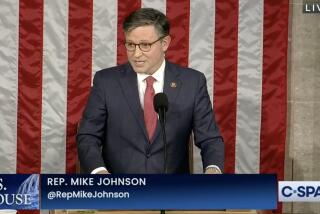Keep Pensions Accountable
- Share via
The word “pension” has an increasingly old-fashioned feel, particularly for younger workers who jump from job to job without a private retirement plan -- or, at most, have a tax-free investment account fueled by payroll deductions. But 34 million U.S. workers and retirees still count on old-fashioned pension checks that, like Social Security, are based on salary and length of service.
The aging U.S. workforce, the poor economy and some bad accounting decisions by employers threaten too many of those pensions. Additionally, the government agency that’s supposed to pick up pension obligations when employers go bust is also at risk of going under. The federal Pension Benefit Guarantee Corp. has a deficit that’s hit $5.4 billion, a steep deterioration from its comfortable surplus of $9.7 billion two years ago. The nose dive is largely fueled by its assumption of pension obligations shed by bankrupt airlines, steel companies and retailers.
The General Accounting Office reports that the PBGC soon may have to assume $35 billion more in pension obligations for financially troubled employers. And the Treasury Department reports that the $1.5-trillion traditional pension sector is underfunded by a cumulative $300 billion -- it has too little on hand to cover all promised benefits.
A quick economic rebound would ease the financial pressure, but the bottom line of all this bad news is that it’s not just retirees and pension holders who have reason to worry. Treasury Secretary John W. Snow rightly compares the looming crisis to the 1980s savings and loan fiasco that left taxpayers on the hook for a $150-billion industry bailout.
The General Accounting Office on July 23 placed the 29-year-old PBGC on a list of “high risk” government operations that demanded immediate congressional and White House action. The last time the PBGC reached the GAO’s critical list, in 1990, it took five years to restore the agency’s health.
Demographics are playing a big role in today’s crisis. In 1980, nearly 80% of traditional pension fund participants were workers who had yet to draw a retirement dime; by 2000, nearly half were retirees drawing benefits. But government also has stuck with unrealistic accounting rules that lead to painful surprises for workers when fund managers suddenly say they can’t pay promised benefits -- as happened at US Airways when the bankrupt airline walked away from a pension fund for thousands of its pilots.
Despite enough bad news to make an actuary choke, employers are asking for rule changes that would allow overly optimistic assumptions about interest rates. Congress and the White House should reject these proposals, which would let companies delay contributions and conceal plan weaknesses.
Corporations should be required to prove that pension funds contain sufficient assets to pay out promised benefits. Workers, retirees and taxpayers deserve regular reports on the true financial state of corporate retirement funds. Painful truth is better than smoke and mirrors.
More to Read
Inside the business of entertainment
The Wide Shot brings you news, analysis and insights on everything from streaming wars to production — and what it all means for the future.
You may occasionally receive promotional content from the Los Angeles Times.










